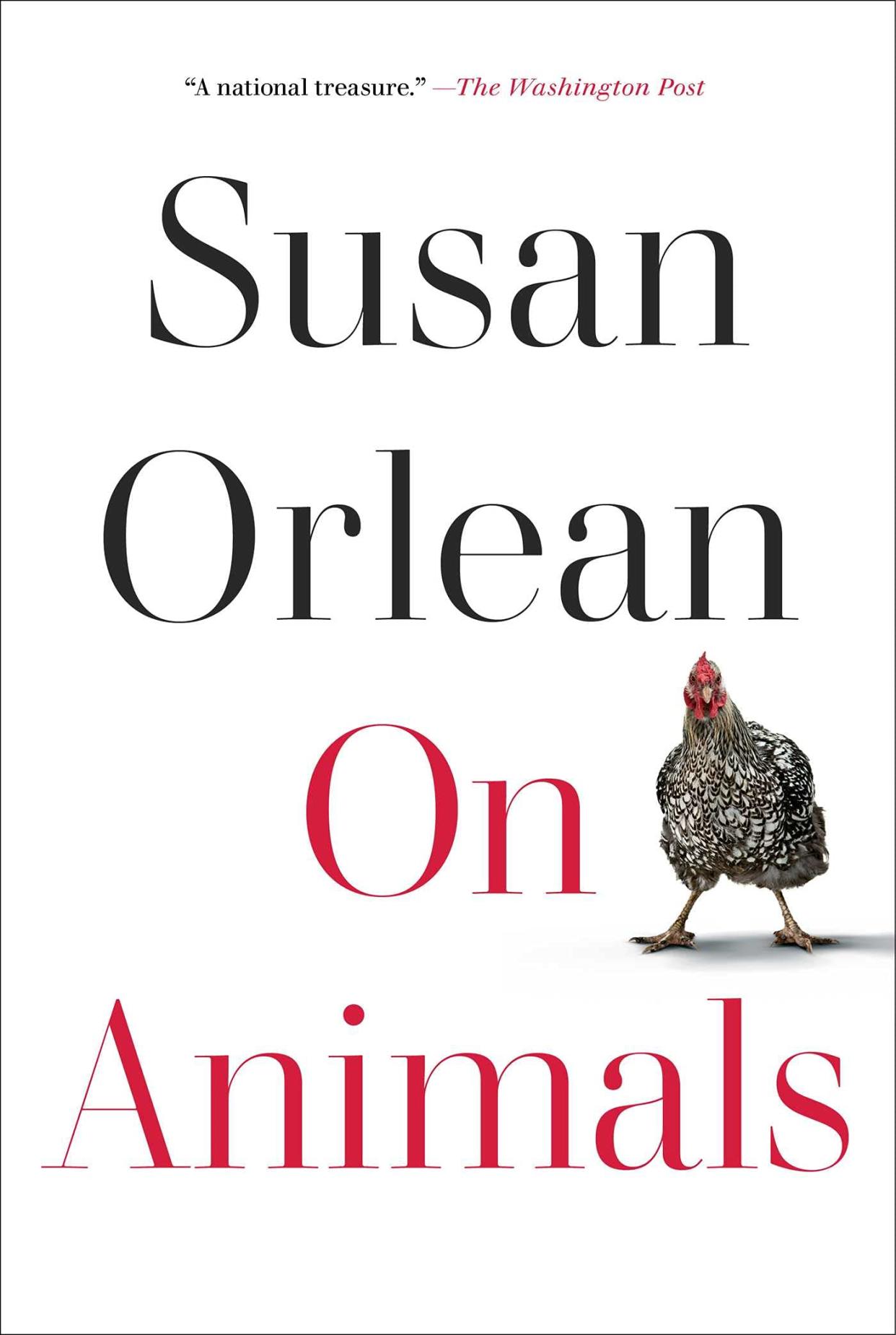Book review: Delightful, informative collection of animal tales

- Oops!Something went wrong.Please try again later.
"On Animals"
Author: Susan Orlean
Avid Reader Press, 258 pages, $28
Susan Orlean has always had a soft spot for writing about animals or about people who love animals. And the legend goes that the first story she ever created was called “Herbert, the Near-Sighted Pigeon.” When she was 5 or 6 she couldn’t stop writing about horses, but don’t miss her chapter on mules, which she began to love.
Anyone can write a tale about animals, but it takes an earnest writer to pen a truly wonderful story with huge amounts of information about things you never knew about them. Mules might never have intrigued you, but you may find yourself longing to check one out, up close. They can carry as much as 300 pounds of cargo for three weeks straight, strolling along as though it was “a bag of balloons.” Orlean avows that a mule is way smarter than a horse. A mule will never die galloping over a cliff to its death, but a horse will. It was our first president who started the craze for breeding mules, and for 150 years they were revered because they ate less, broke down less and carried more supplies than horses. When the mules brayed too loudly, they had to be “de-brayed!”
That’s only one of the 15 animals that Orlean highlights in “On Animals.” Other stories are about chickens, tigers, lions, rabbits, oxen and more. There’s also an amazing story about a lost (and found) dog.
If you don’t know much about taxidermy, you will after you read her chapter called “Lifelike.” Orlean takes us on a ride to the Springfield, Illinois, Crowne Plaza Hotel, where the 2003 World Taxidermy Championships were being held.
Not just whole animals were being chaperoned on pallets, but also “millions of eyes, boxes of bowls of them, some eyes as big as an egg,” — or, she writes, some as small as a lentil. A good taxidermist of course must be good at sewing, sculpting, painting and hairdressing. This is a $570 million business with hunters coming up with $200 for a pheasant taxidermy to several thousand for a grizzly bear. Three thousand visits daily are made to Taxidermy.net. There’s even a competition for kids ages 14 or younger.
The chicken story goes all the way back to the 1800s and a remarkable kind of chicken called a Cochin that meandered about like a “walking powder puff.” It started a craze for breeding “on a scale similar to the Dutch tulip mania and Victorian orchidelirium” One pair of chicks was priced at $700, which was 10,000% greater than the usual price. Their eggs weighed more than one pound. The phrase we use, “pecking order,” harkens back to chickens who forbid each other to get out of line in order to bust their way to the head of the line.
And pandas? The lovable panda eats its weight every day in bamboo, but the fact is they used to eat protein until they lost their taste for it: Reason? Unknown. We also read that pandas’ babies at birth are no bigger than stick of butter. One taxidermist confessed that working with pandas was not hard. “He took two black bears and bleached one of them. He says he used “Clairol basic bleach and sewed the two skins together into a panda pattern.” With an Oral-B toothbrush, “he fluffed out the fur on the panda’s face.”
These stories were first published in The New Yorker, going back to 1995 (“Show Dog”) and on up to 2020 (“The Rabbit Outbreak”) and were considered typically top-notch New Yorker articles. It’s all the details that make Orlean’s writing shine. They make great reading for any time of year but perhaps never more than now when we all need an enjoyable book to recover from the holidays.
Mims Cushing lives in Ponte Vedra Beach and has written three books.
This article originally appeared on Florida Times-Union: Book review: 'On Animals' by Susan Orlean

